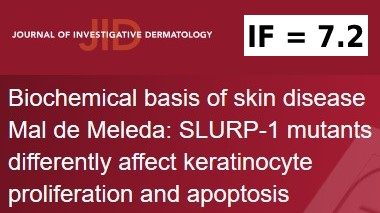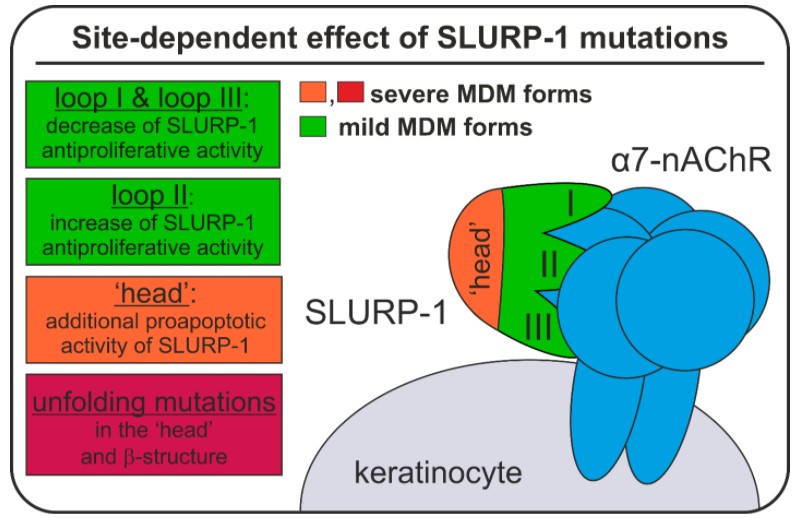Press-room / news / Science news /
The role of natural mutations of the human protein SLURP-1 in the pathogenesis of Mal de Meleda skin disease has been determined
Mal de Meleda (MDM) is recessively inherited palmoplantar keratoderma associated with mutations in a gene encoding SLURP-1 protein. SLURP-1 is a paracrine regulator of keratinocyte homeostasis interacting with the α7 type nicotinic acetylcholine receptor (α7-nAChR). This receptor participates in control of growth, terminal differentiation, apoptosis and cornification of keratinocytes. Dysregulation of the α7-nAChR function due to SLURP-1 deficiency or point mutations of this protein may underlie MDM pathogenesis.

Shulepko MA, Bychkov ML, Shenkarev ZO, Kulbatskii DS, , Paramonov AS, Chugunov AO, Kirpichnikov MP, Lyukmanova EN
Skin lesions areas in MDM patients represent potential sites for amelanotic melanoma and skin squamous cell carcinomas development. SLURP-1 expression is down-regulated in primary melanomas and to more extent in metastatic melanomas compared to normal cells. Notably, treatment with tobacco nitrosamines reduces SLURP-1 expression in keratinocytes, while treatment with recombinant SLURP-1 protects keratinocytes from oncogenic transformation. In line with it, SLURP-1 down-regulates proliferation of various epithelial cancer cells, including epidermoid carcinoma, via interaction with α7-nAChR (Lyukmanova et al. 2018).
SLURP-1 has a three-finger structure with β-structural core (‘head’) and three prolonged loops (fingers) similar to snake a-neurotoxins. To determine a role of SLURP-1 mutations in MDM pathogenesis, scientists from the Bioengineering and Structural Departments of IBCh RAS produced and studied 22 mutant variants of the protein with substitutions in different parts of its molecule, including natural variants involved in MDM development. Antiproliferative activity of the mutants was studied on Het-1A keratinocytes. Mutations in the loops I and III resulted in the partial or complete inactivation of SLURP-1, while majority of mutations in the loop II increased SLURP-1 antiproliferative activity. Substitutions of R96 and L98 residues located in the protein ‘head’ by alanine resulted in appearance of proapoptotic activity of SLURP-1. Results obtained agree well with observed diversity of the MDM phenotypes. Effect of SLURP-1 mutants on keratinocyte homeostasis depends on a location in the molecule, where the mutation is appeared. Effects can lead to mild or severe forms of Mal de Meleda, and can include changes in the antiproliferative and apoptotic properties of SLURP-1. Using the obtained functional data, model of the SLURP-1/α7-nAChR complex was built.
Study provides new functional and structural information about the role of the SLURP-1 mutations in MDM pathogenesis, predicts new SLURP-1 variants, which could drive the disease, and map the binding site of this human protein with α7-nAChR. The work was published in the Journal of Investigative Dermatology (IF 7.2, Q1) under support of the Russian Science Foundation.

march 29, 2021

